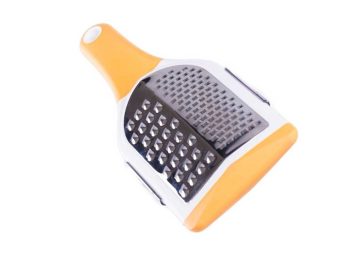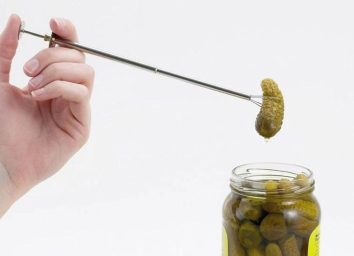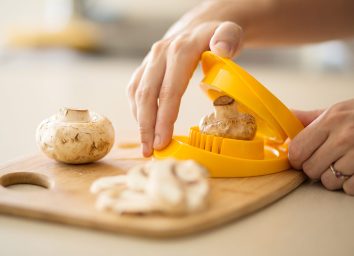30 Most Dangerous Items Lurking in Your Kitchen Right Now
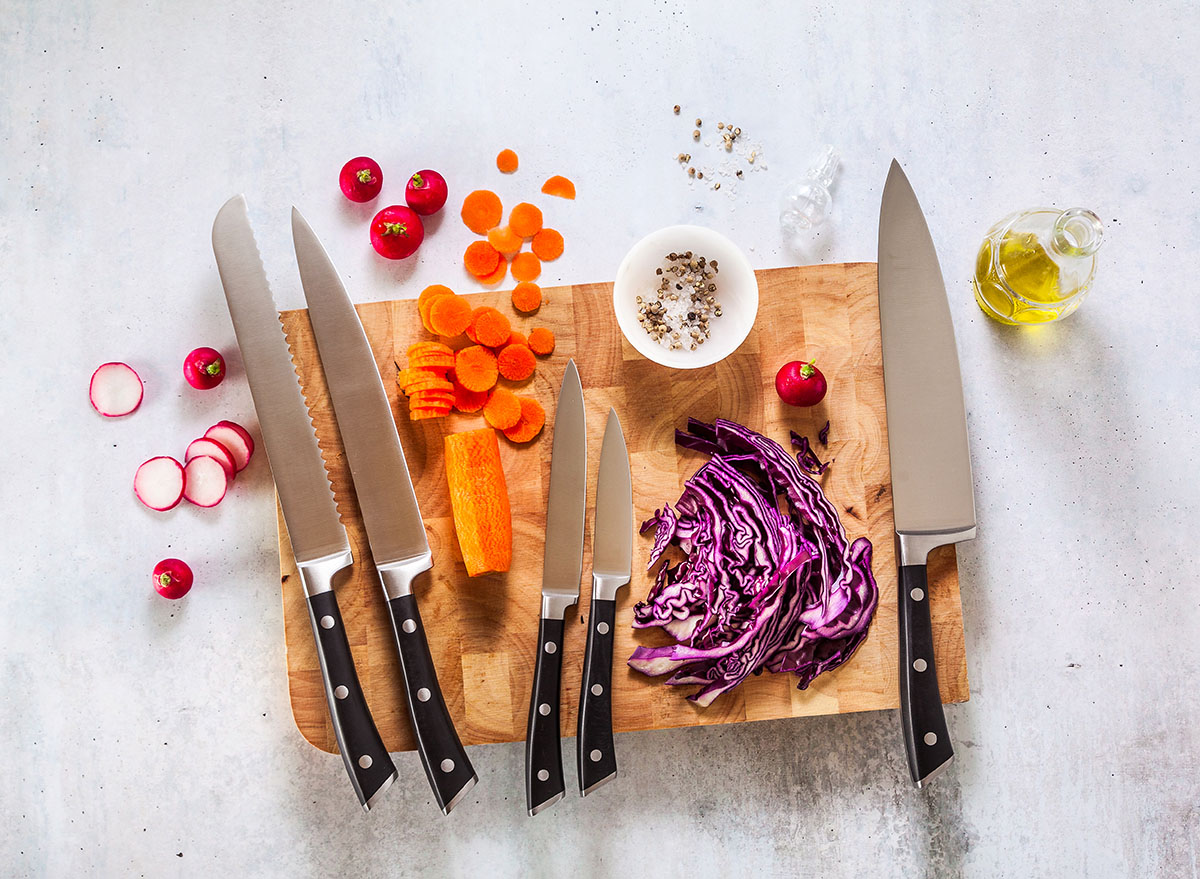
With open flames, grease, and sharp knives, it’s no secret that the kitchen can be one of the most dangerous rooms of your home. Not to mention the bacteria lurking in every nook and cranny and the risk of cross-contamination in a non-regulated kitchen.
Whether you’re just learning your way around the kitchen or you are a seasoned professional though, it’s important to know the dangers in a kitchen that can put your health and safety at risk. By knowing the risks, you can take precautions to avoid any mishaps. Knowledge is power, after all.
Get ready to take some notes: here are some of the most dangerous kitchen items and how to stay safe when you’re using them. And to make sure you’re taking extra precautions, here are common food safety mistakes you’re probably making every day.
Cutting Boards
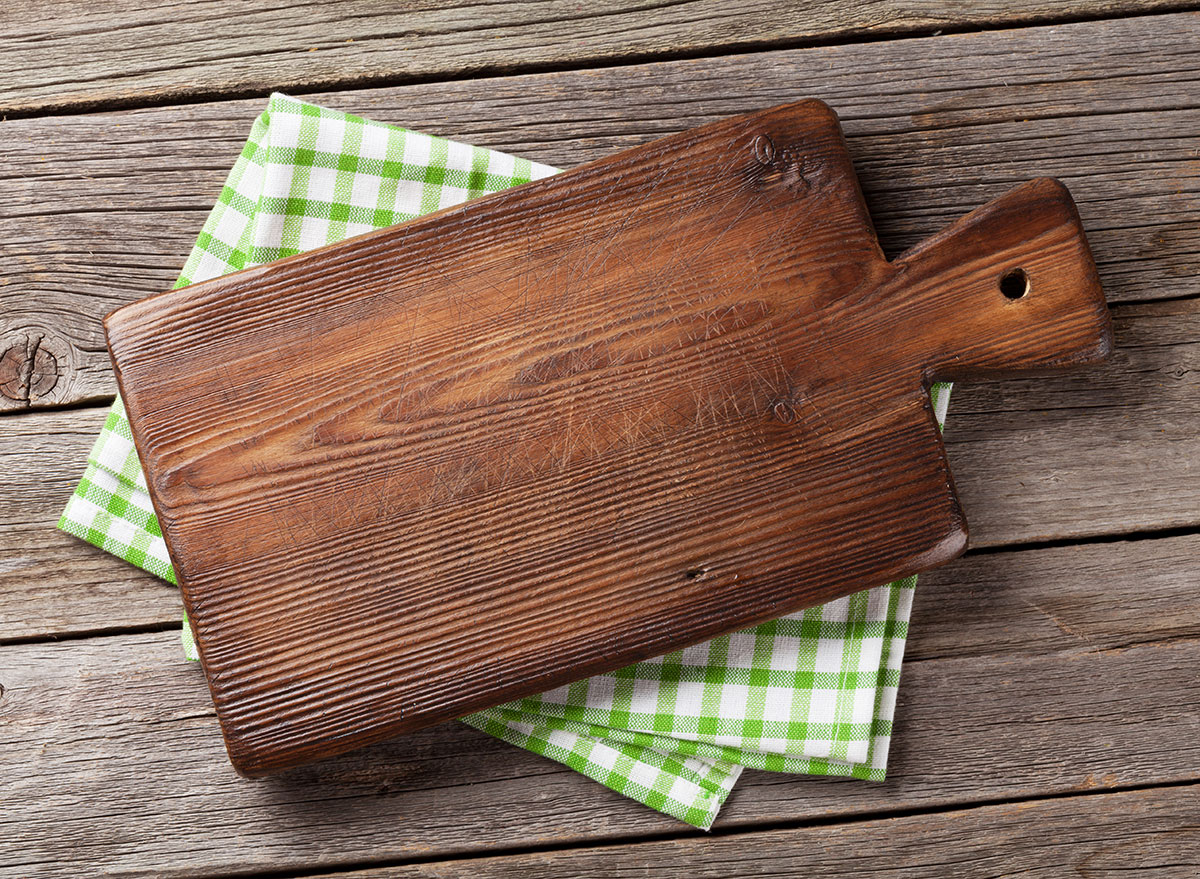
Cutting boards are one of the top cross-contaminated items in the kitchen. It’s not uncommon for people to begin preparing raw meat on a cutting board, only to forget and prepare vegetables or other food on the same surface. Meredith Carothers, the technical information specialist at the USDA’s Food Safety and Inspection Service (FSIS), reminds you to wash (not just rinse) cutting boards with hot, soapy water after preparing each food item.
Countertops
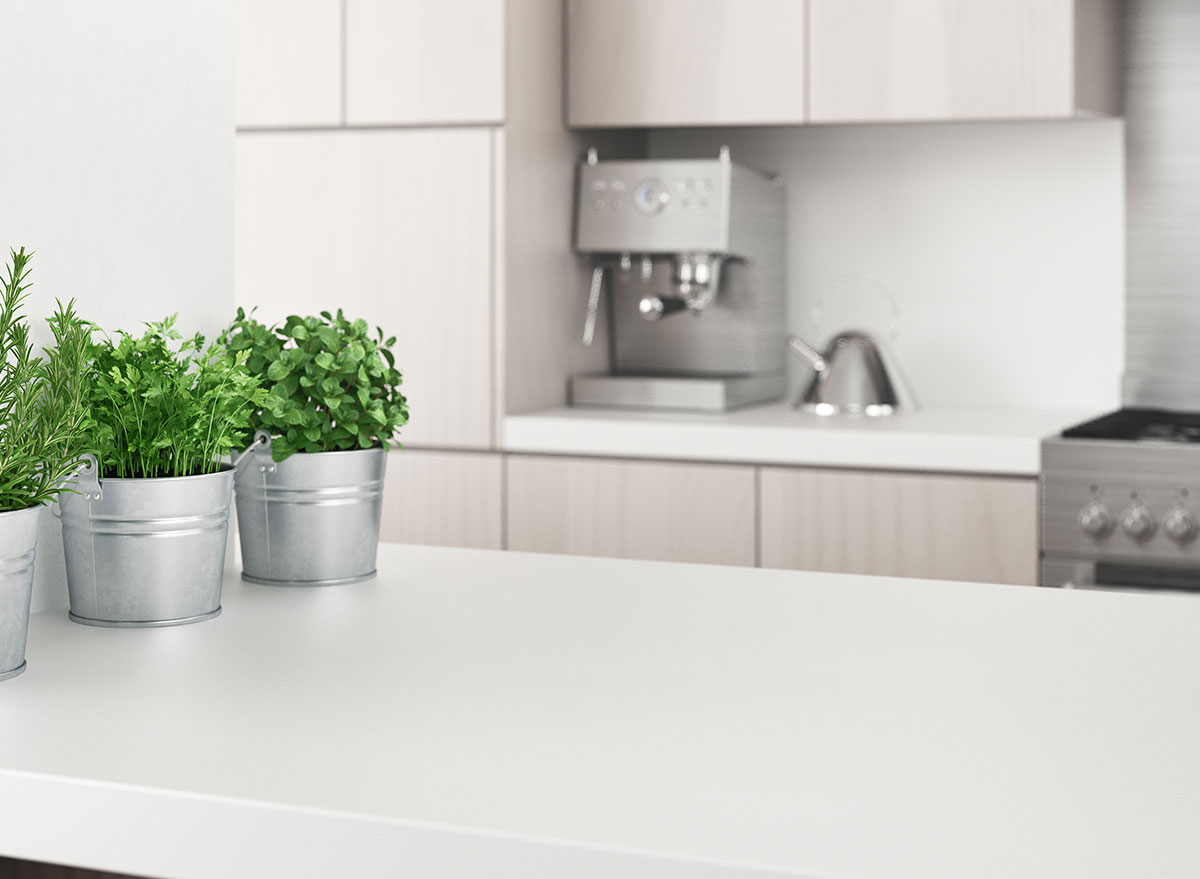
Many people give their countertops a good wipe-down at the end of the night. But when you think about all of the things you might place there over the course of the day—grocery bags, mail, lunch boxes—you’ll soon realize you are reintroducing the germs again and again. Be sure to clean the counters before food prep, too.
Utensils
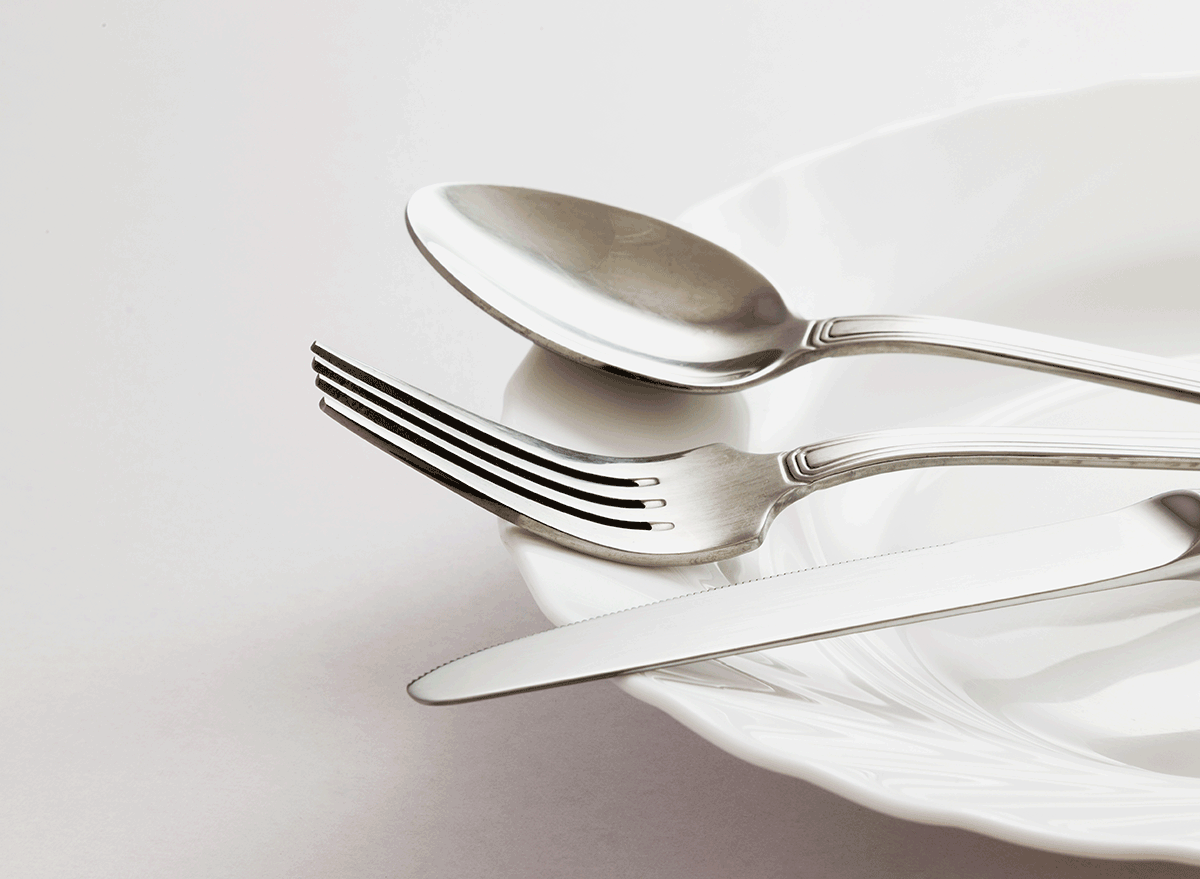
Carothers notes that utensils are another common item that is cross-contaminated in the kitchen. If you use utensils to handle raw meat, be sure to wash them or use new utensils, even if you plan to use them on the same meat after cooking.
Spice Containers
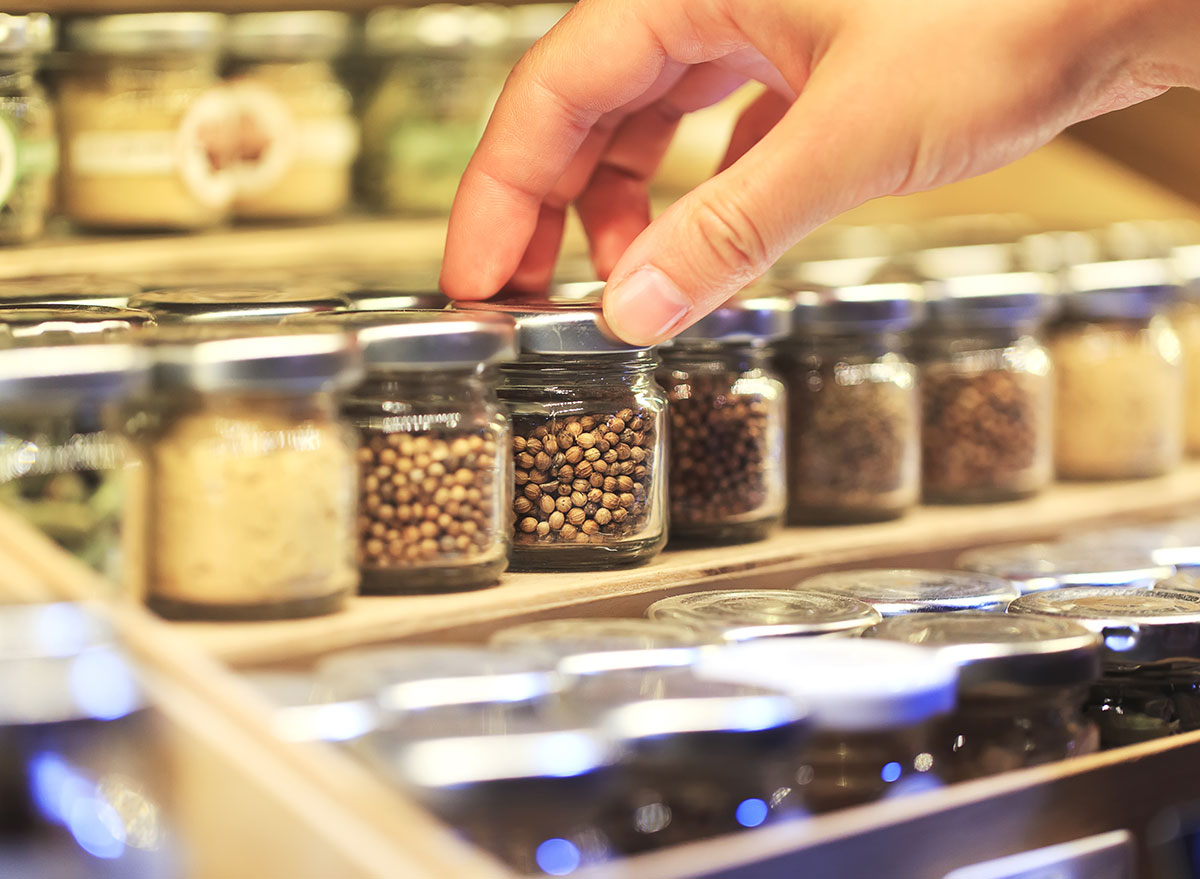
In a FSIS study, participants preparing food in a test kitchen “48 percent of the time [were] contaminating spice containers used while preparing burgers.” Be sure to clean your hands before reaching into the spice cabinet, and clean those containers if you happen to forget.
Knives
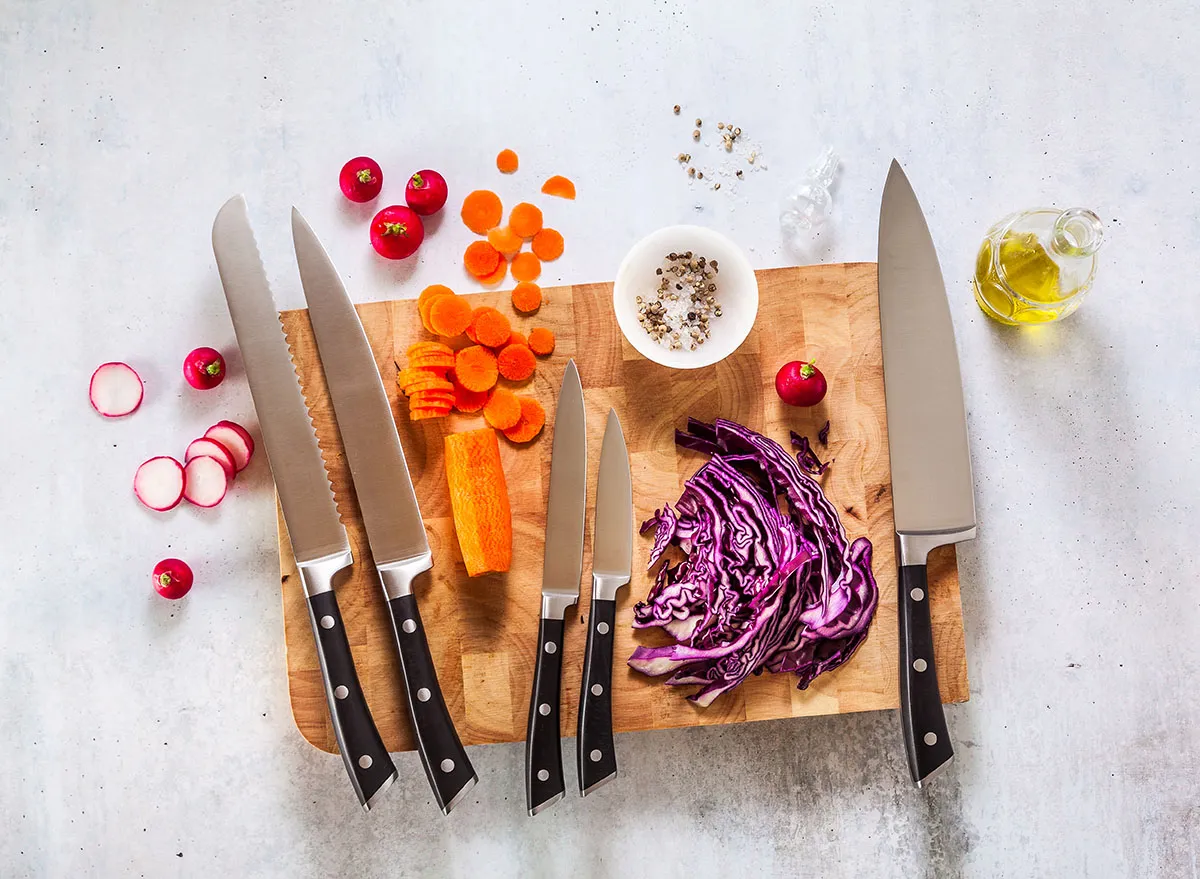
A sharp knife is dangerous if you don’t know how to properly use it, but a dull knife is even more dangerous. You need to apply more pressure for a dull knife to cut effectively, but this heightens the risk of it slipping and cutting you. Keep your knives sharpened, and learn proper cutting techniques. And be sure you’re avoiding any of these ways you just might be ruining your kitchen knives.
Plates and Serving Platters
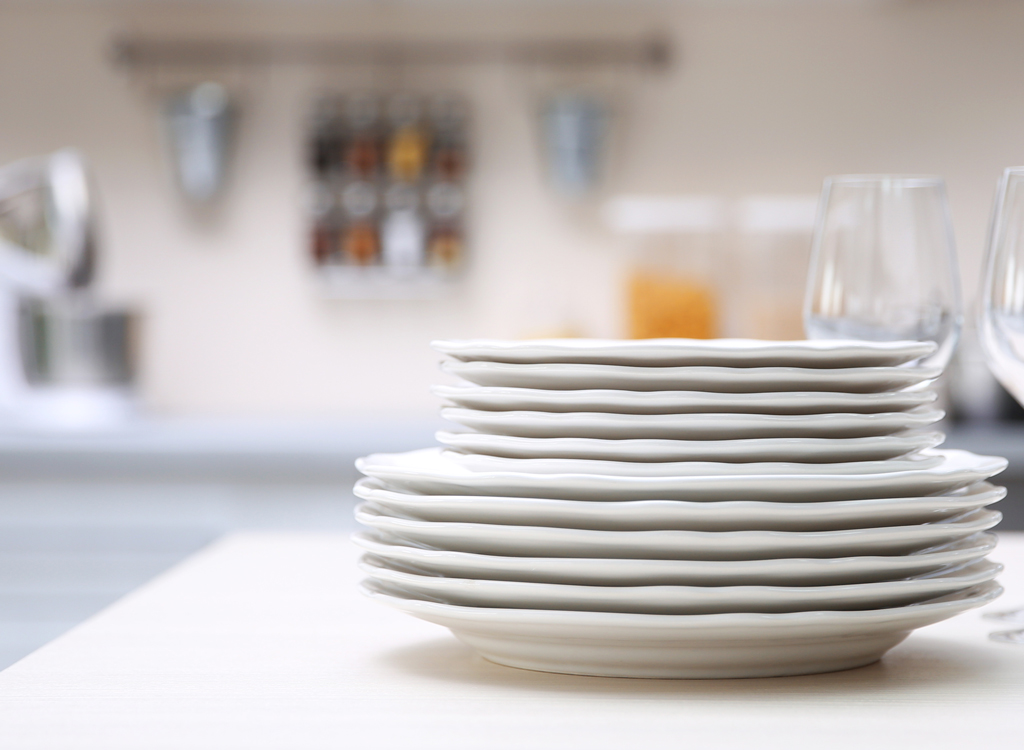
When you are getting ready for a cook-out, you might pile a plate or platter high with the foods you plan to grill. “Never place cooked food back on the same plate or cutting board that previously held raw food,” Carothers says.
Appliance Handles
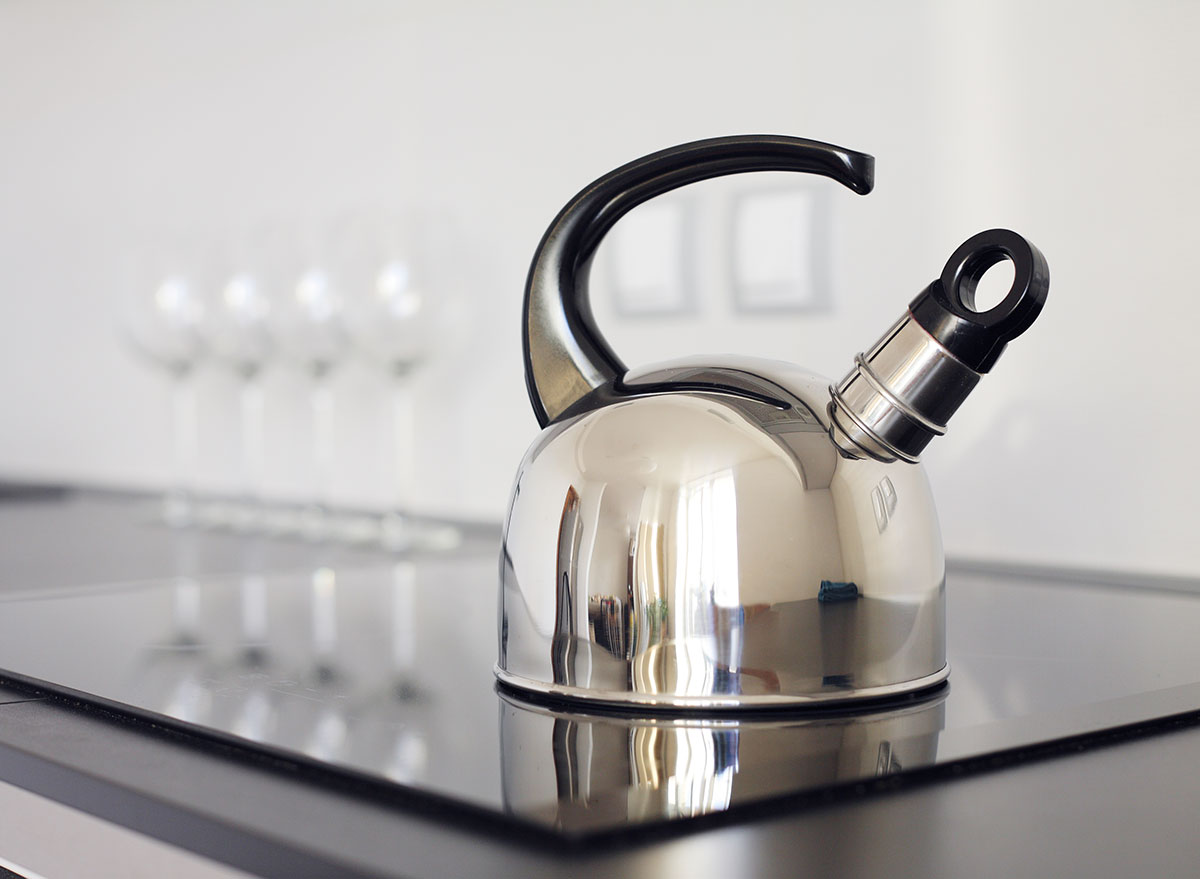
Appliance handles are another hotbed of germs, and they should be cleaned regularly. “Campylobacter and Salmonella, bacteria found in poultry products, have been shown to survive on food contact surfaces for up to four and 32 hours, respectively,” Carothers says. “This means that these bacteria could still be present hours later and can continue to pose a cross-contamination risk if the contaminated surfaces are not adequately cleaned and sanitized at an appropriate time.”
Plastic Storage Containers
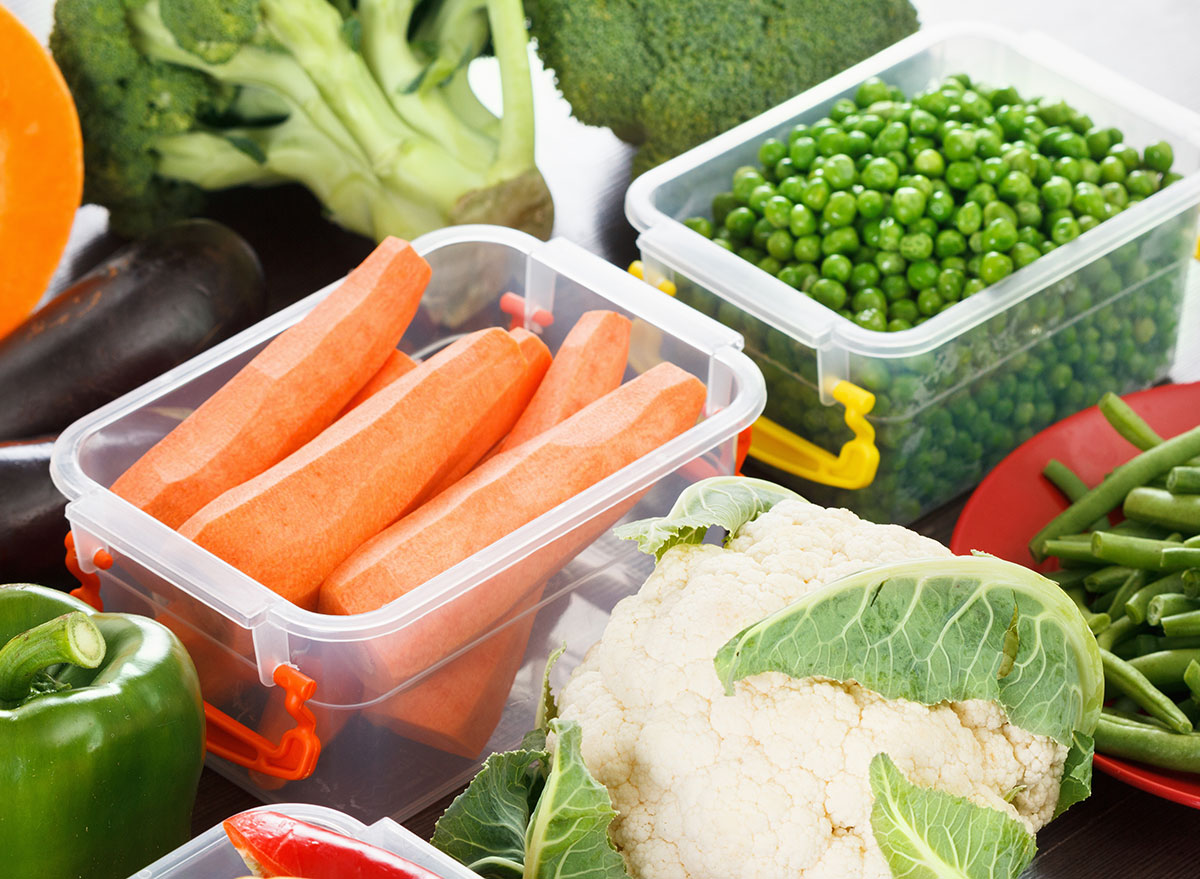
Your plastic storage containers may contain phthalates or BPA, both of which can cause dangerous chemicals to leach into your food, particularly if you add hot food to these types of containers or if you microwave food in these containers. Check to see if your containers are free of these chemicals, and consider swapping to glass containers.
Electronics

With so many recipes accessible online, it makes sense to keep your phone or tablet close at hand in the kitchen. But our phones have 10 times more germs than a toilet seat—so you probably shouldn’t be checking a recipe then diving into food prep.
RELATED: 20 Ways Your Grocery Store Makes You Sick
Sinks
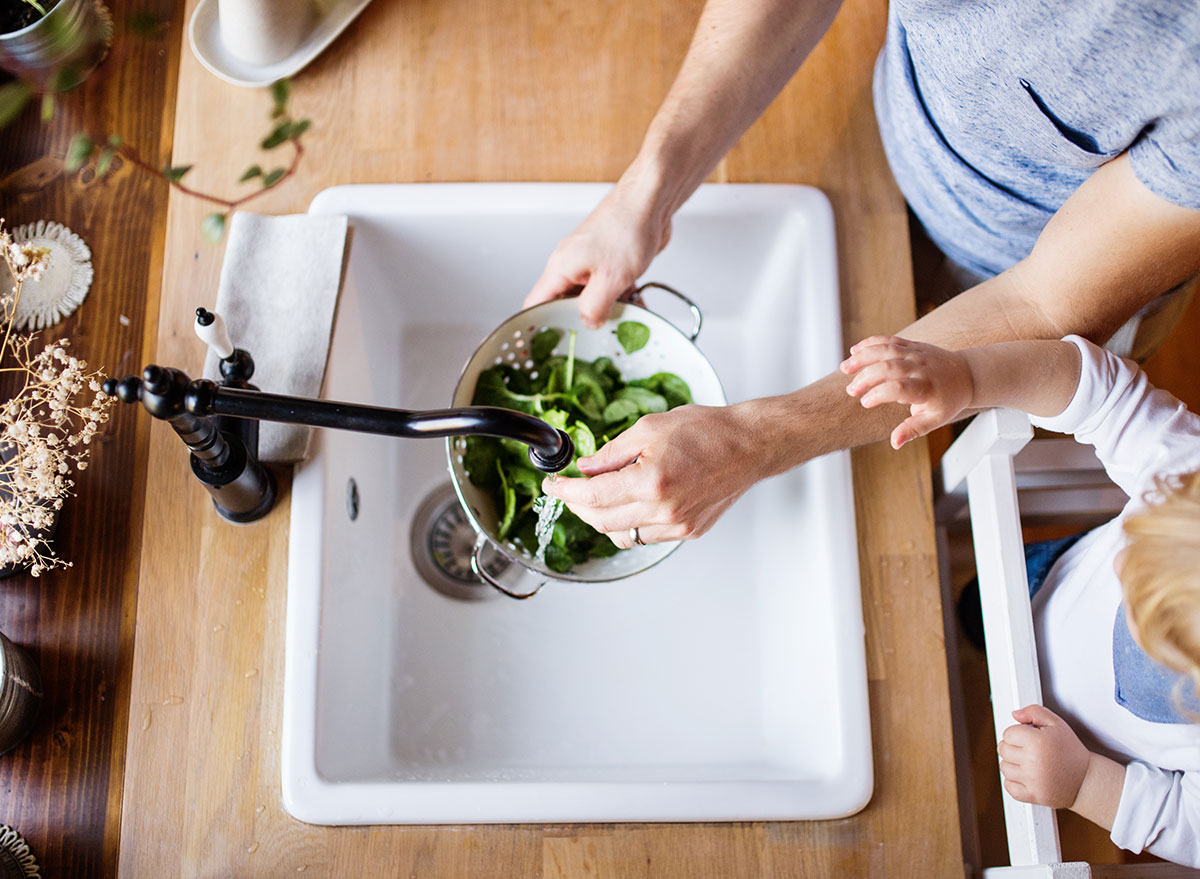
Sometimes, you are just too tired to clear out the sink at the end of the day. But dirty dishes can become a breeding ground for bacteria, and those germs can stick around for hours afterward. FSIS also found that in the test kitchen, “76 percent of participants did not attempt to clean and sanitize the sink immediately following chicken washing or rinsing. 96 percent were not successful at both cleaning and sanitizing of the sink.” This led to contamination of the salads that were prepared, too. Yikes.
Nonstick Cookware
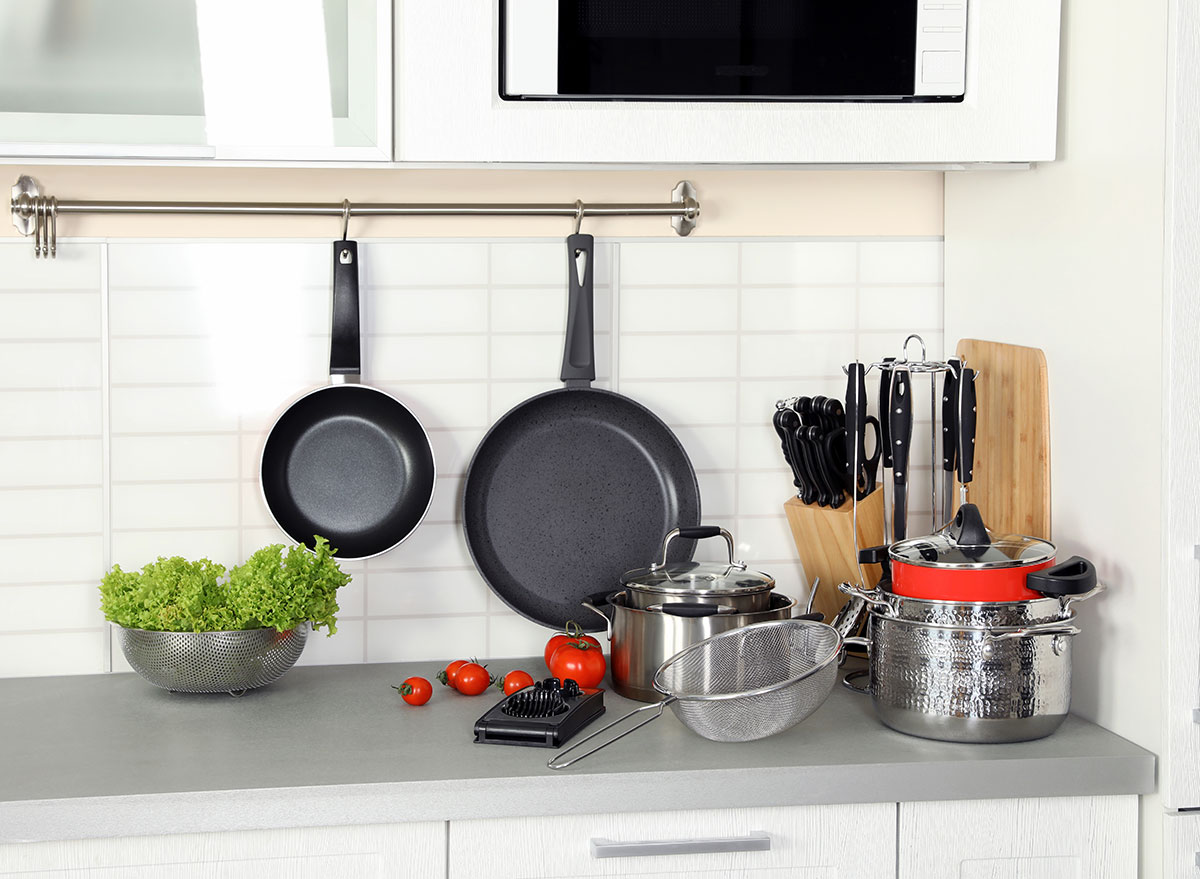
Nonstick pots and pans come in handy when it’s time to clean up, but unfortunately, the PTFE coating that keeps food from sticking “releases various gases and chemicals that present mild to severe toxicity” when heated, according to a study in Environmental Science and Pollution Research.
Raw Meat
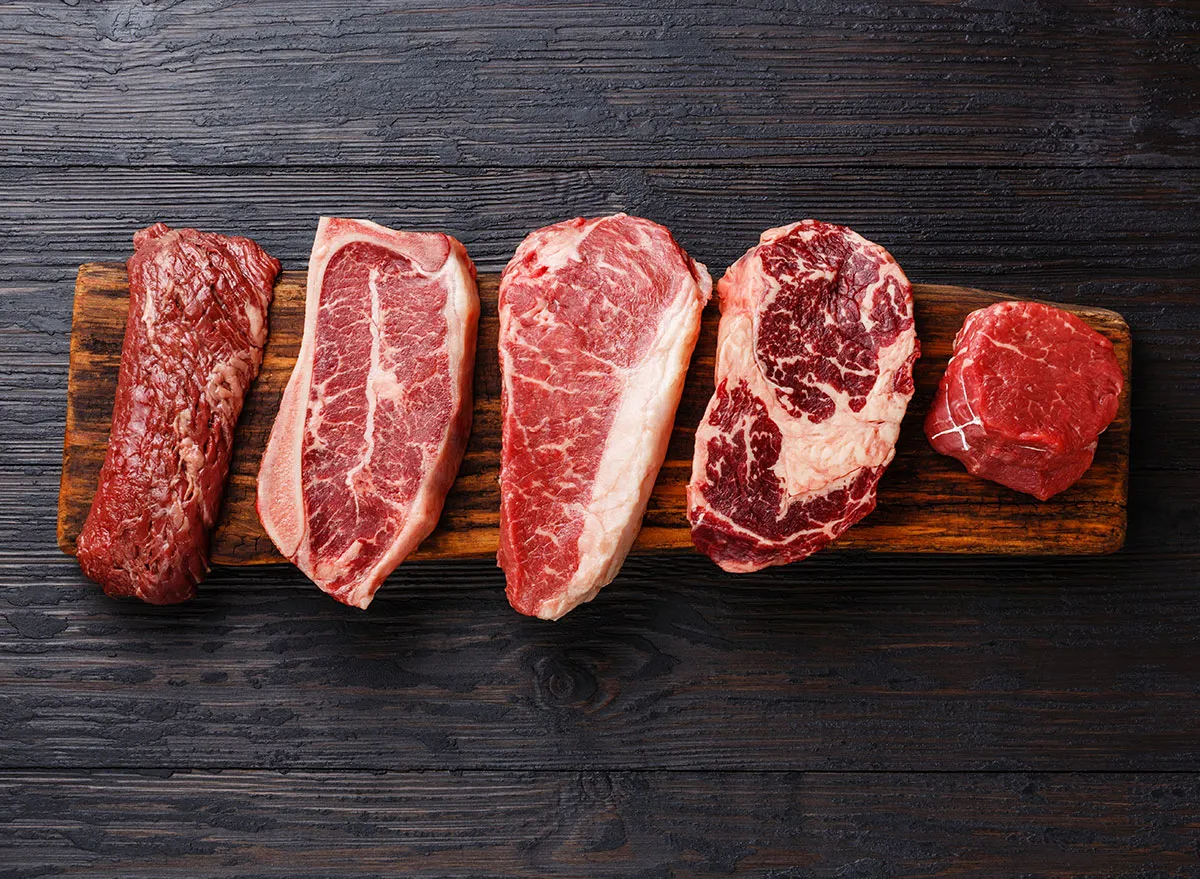
From the sink to the knife to the cutting board, raw meat can contaminate just about everything in your kitchen and cause foodborne illness, which, according to Carothers, affects 48 million people and causes 3,000 deaths annually in the U.S. You also need to familiarize yourself with safe internal temperatures for various foods, from eggs and beef to leftovers and casseroles.
Mandolin
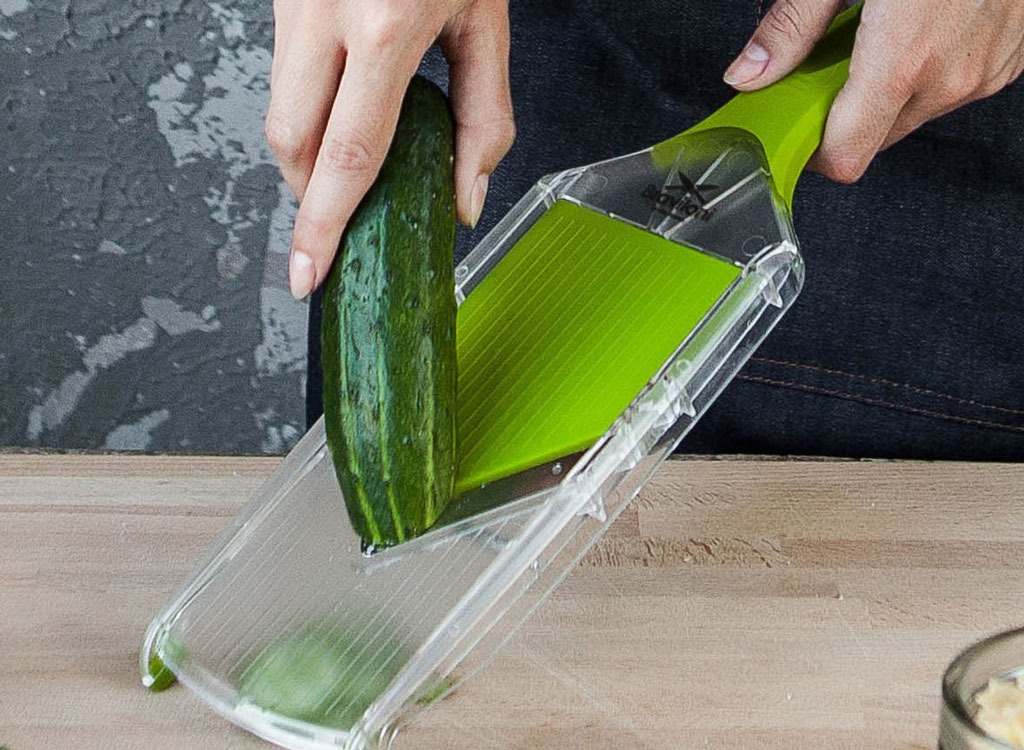
Mandolins can make food prep quick and easy, but they are incredibly sharp and dangerous if you aren’t careful. Nan Strait, executive producer of Top Chef, told The New York Times, “Got to watch out for the mandoline. It’s got to be one of the most dangerous home tools. It will cut your hand in a heartbeat.”
RELATED: These Everyday Activities Are More Dangerous Than Ever, Says Expert
Steam
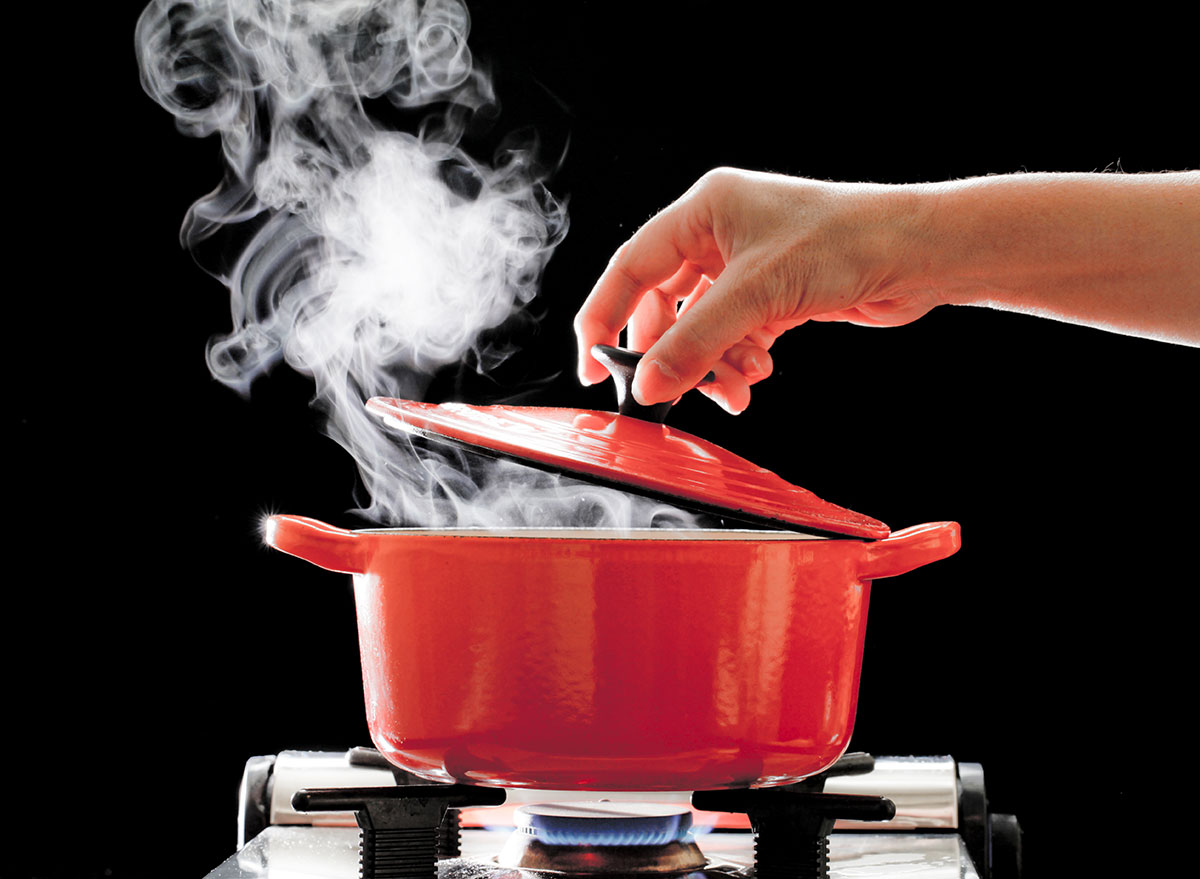
You might not think about it while you stir a boiling pot of pasta, but the steam can burn you. Reaching over a vigorously steaming pot is incredibly dangerous. “The steam penetrates through the skin pores onto the lower skin layer, the dermis,” said René Rossi, head researcher of a study on steam burns by Swiss Federal Laboratories for Materials Science and Technology. “Only there does the steam condense, thereby releasing its thermal energy directly onto the sensitive dermis—and thus directly triggers second-degree burns.”
Cleaners
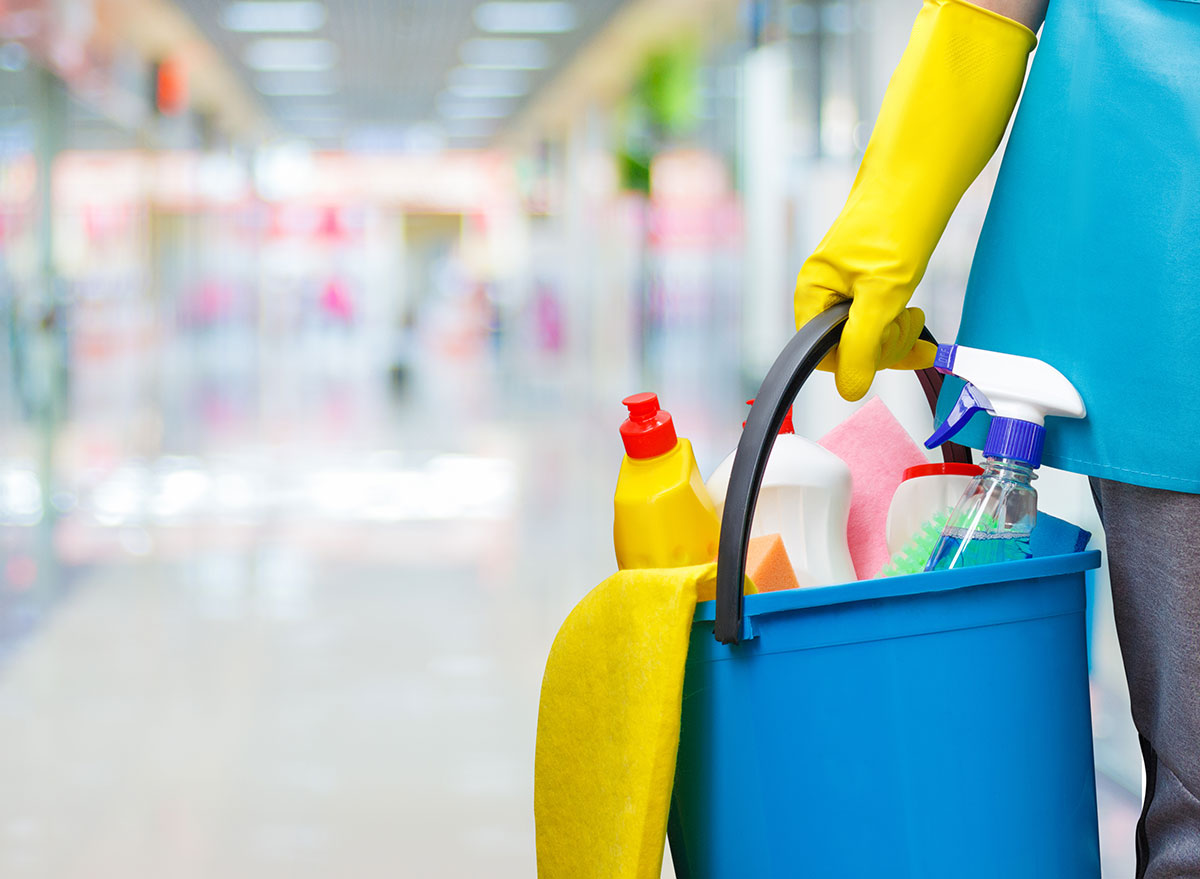
To kill germs and remove tough spills and grease spots, kitchen cleaners are filled with powerful chemicals. Oven cleaners are particularly filled with toxins to remove built-up stains, but even dishwasher detergent can be harmful. It’s best to use simple, natural cleaners when possible, and make sure you keep the area well-ventilated when using cleaners. So open those windows and let some air in!
Aluminum Foil
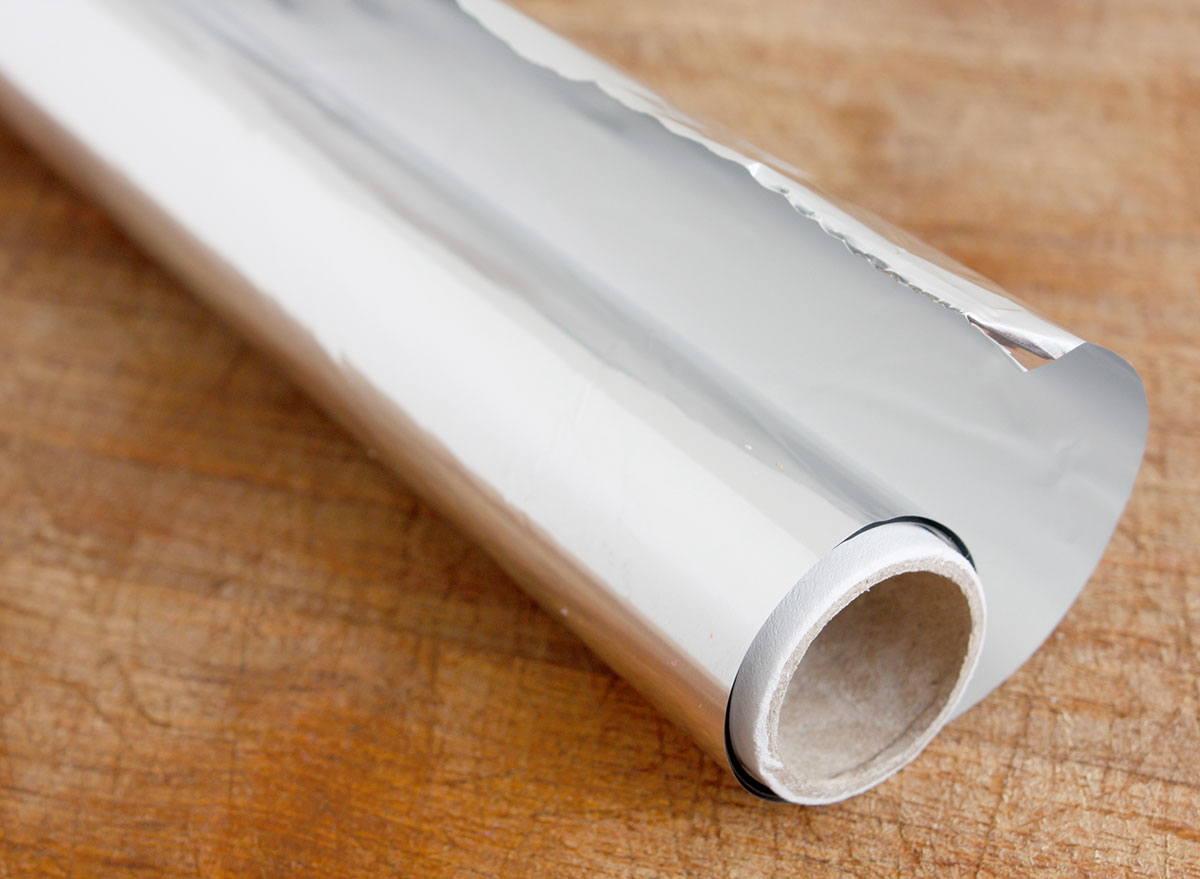
Foil-pack dinners are popular for being quick to make and easy to clean up. But cooking acidic foods, like tomato sauce or citrus, in aluminum can be dangerous. The acidity can cause the aluminum to leach into your meal, and excess amounts of aluminum in the body could be linked to Alzheimer’s and kidney disease, although more studies need to be done on the subject.
Cheese Grater
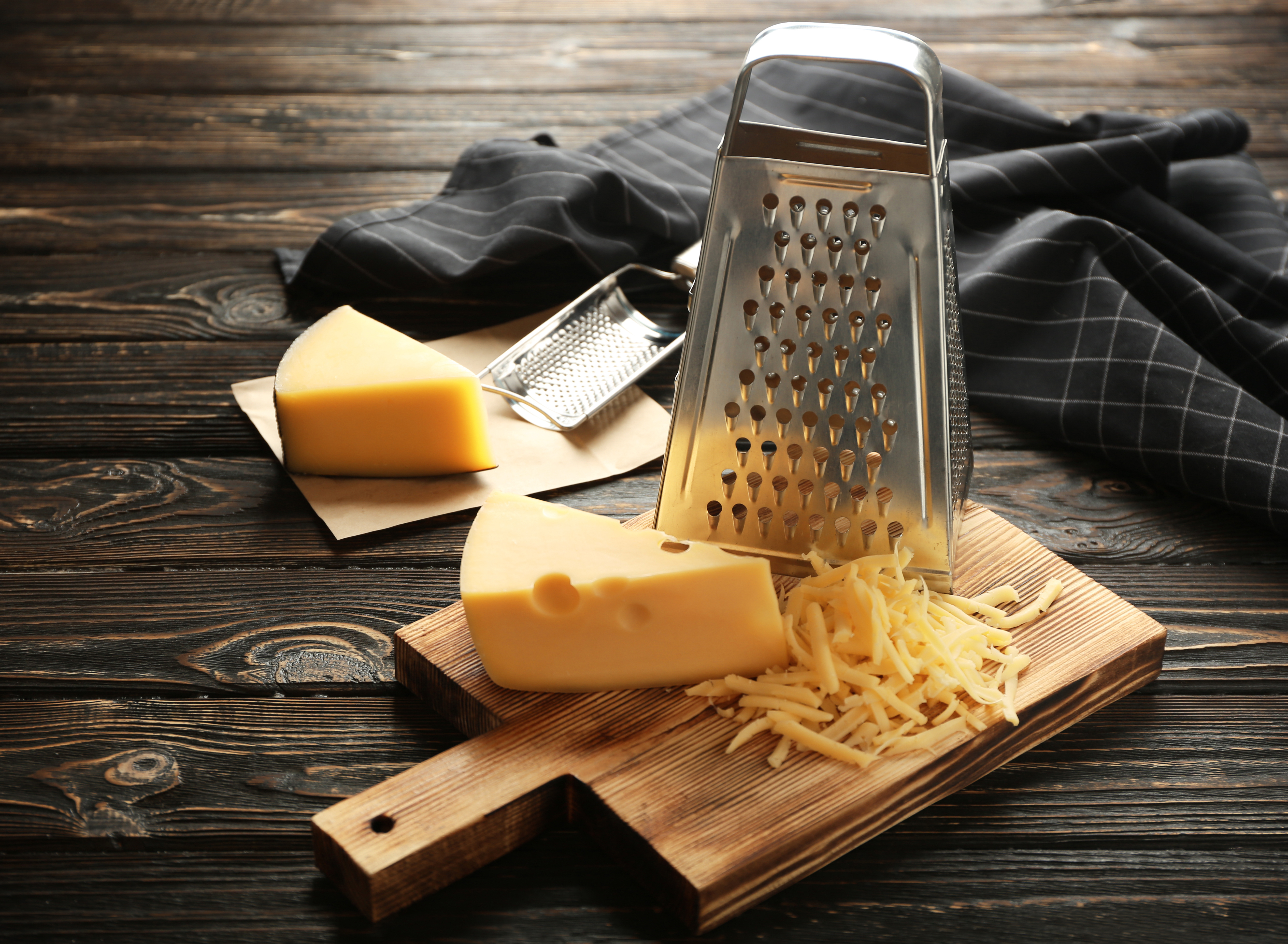
Grating cheese for a delicious, homemade casserole? It’s easy to get into the zone and grate away, but it’s not unheard of to accidentally grate the tips of your fingers! Ouch!
Immersion Blender
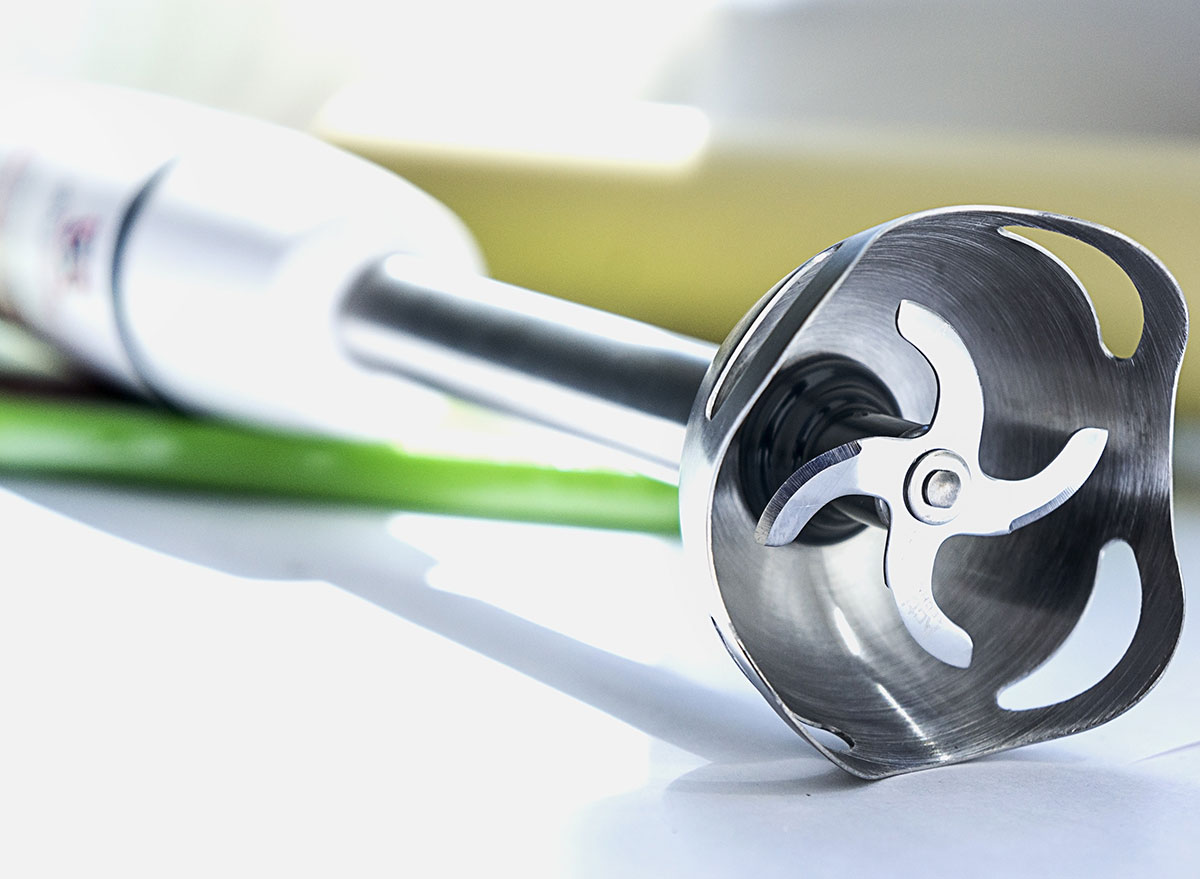
Immersion blenders are great for making soups and sauces, but be sure to unplug them and store them away rather than leaving them on the counter, where it can be easy to bump your hands into the sharp blades. Also, start blending hot foods slowly to prevent burning splatters.
Skewers
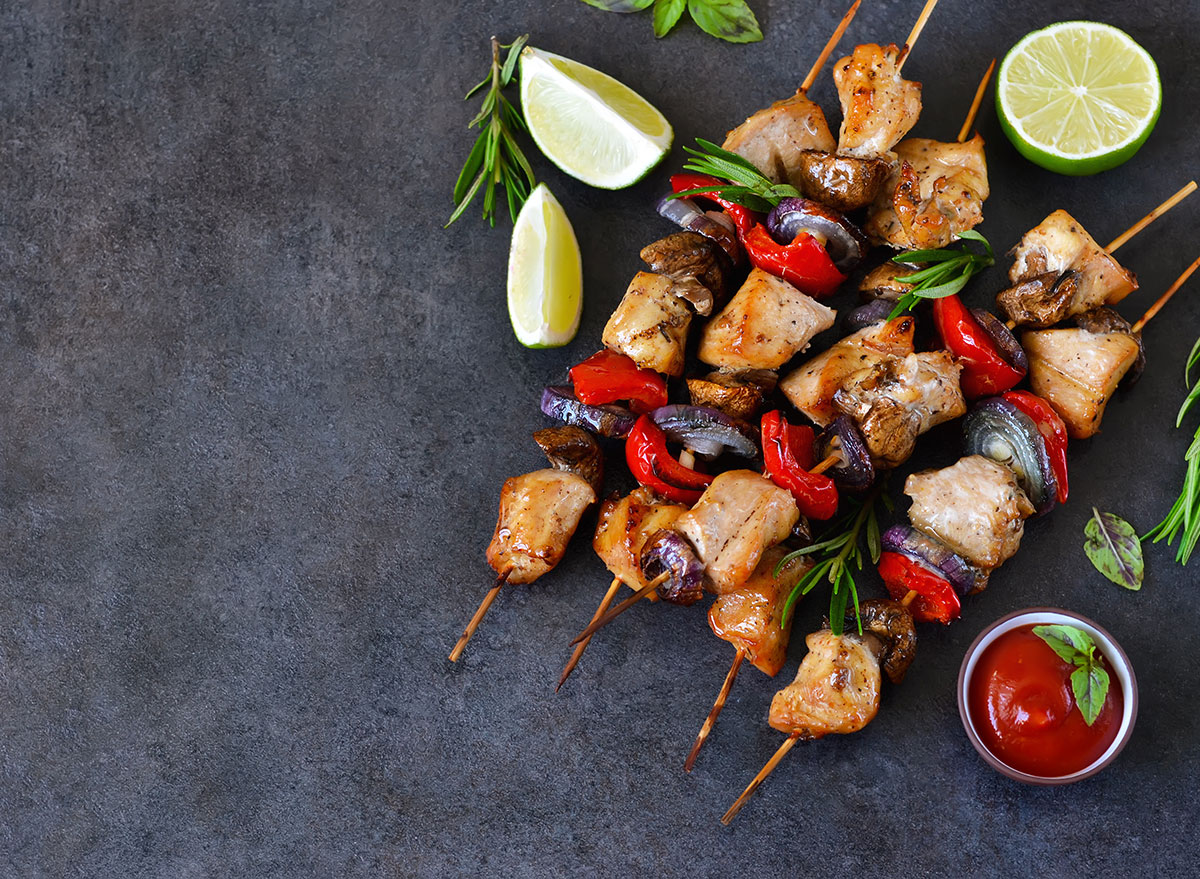
Skewers are sharp and pointy, so be careful as you put food on them. Nothing makes us cringe more than the thought of spearing a hand on accident!
Kitchen Towels
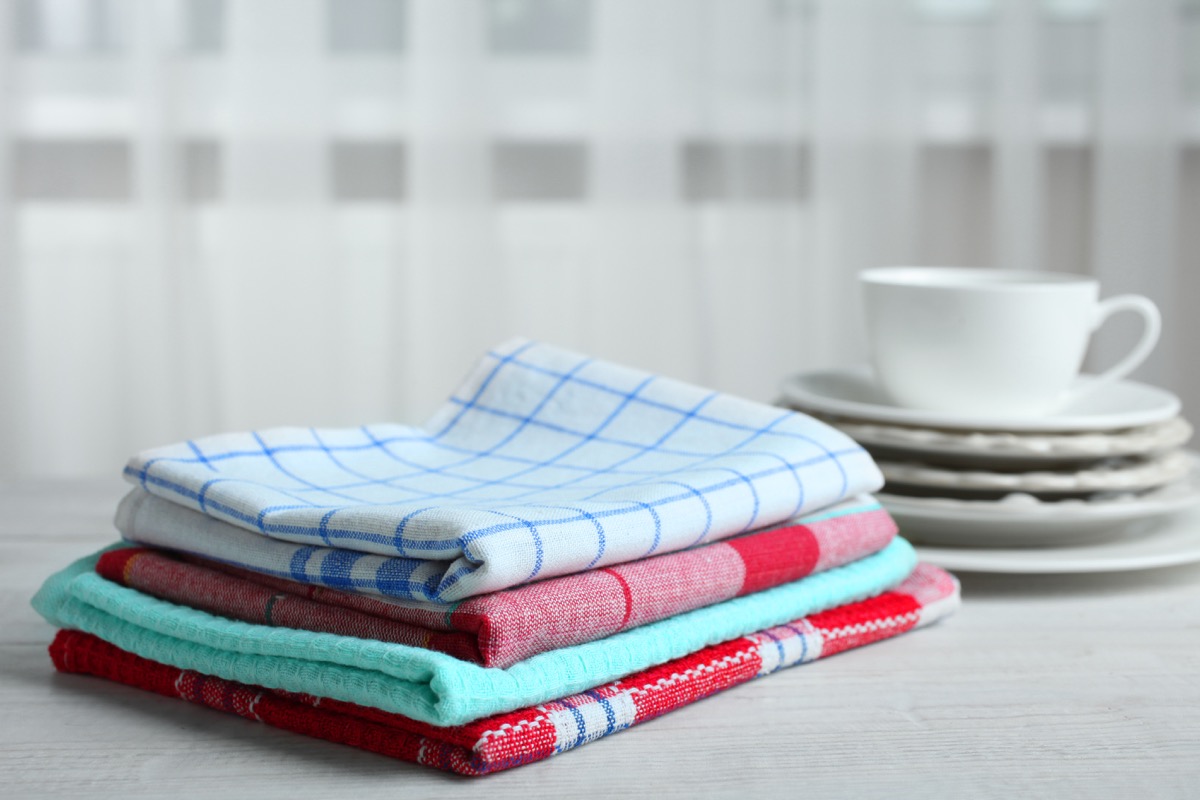
Don’t forget to wash those kitchen towels! A 2015 study found that kitchen towels are a leading cause of cross-contamination in the kitchen. “Other researchers found that salmonella, bacteria commonly found in raw meat and poultry products, grows on cloths stored overnight, even after they were washed and rinsed in the sink,” the study said.
Another danger with kitchen towels? Using them, when they are wet as makeshift pot holders will burn you almost instantly. Ouch!
Gas Stove
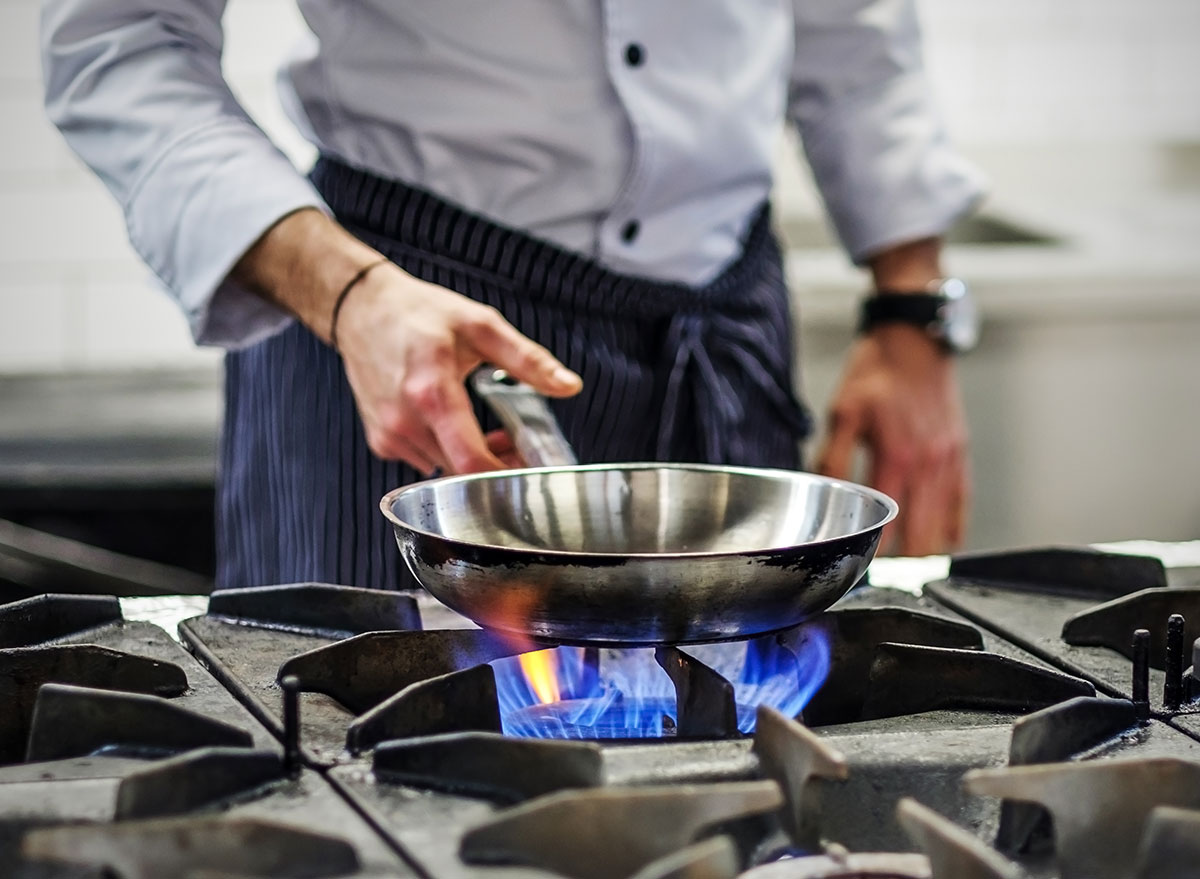
Gas stoves are excellent for cooking items sensitive to temperature because you can quickly add or reduce the heat. But be sure to turn off the burners after cooking. Keep kitchen towels away from the stovetop, and monitor regularly for gas leaks or carbon monoxide.
Pressure Cooker
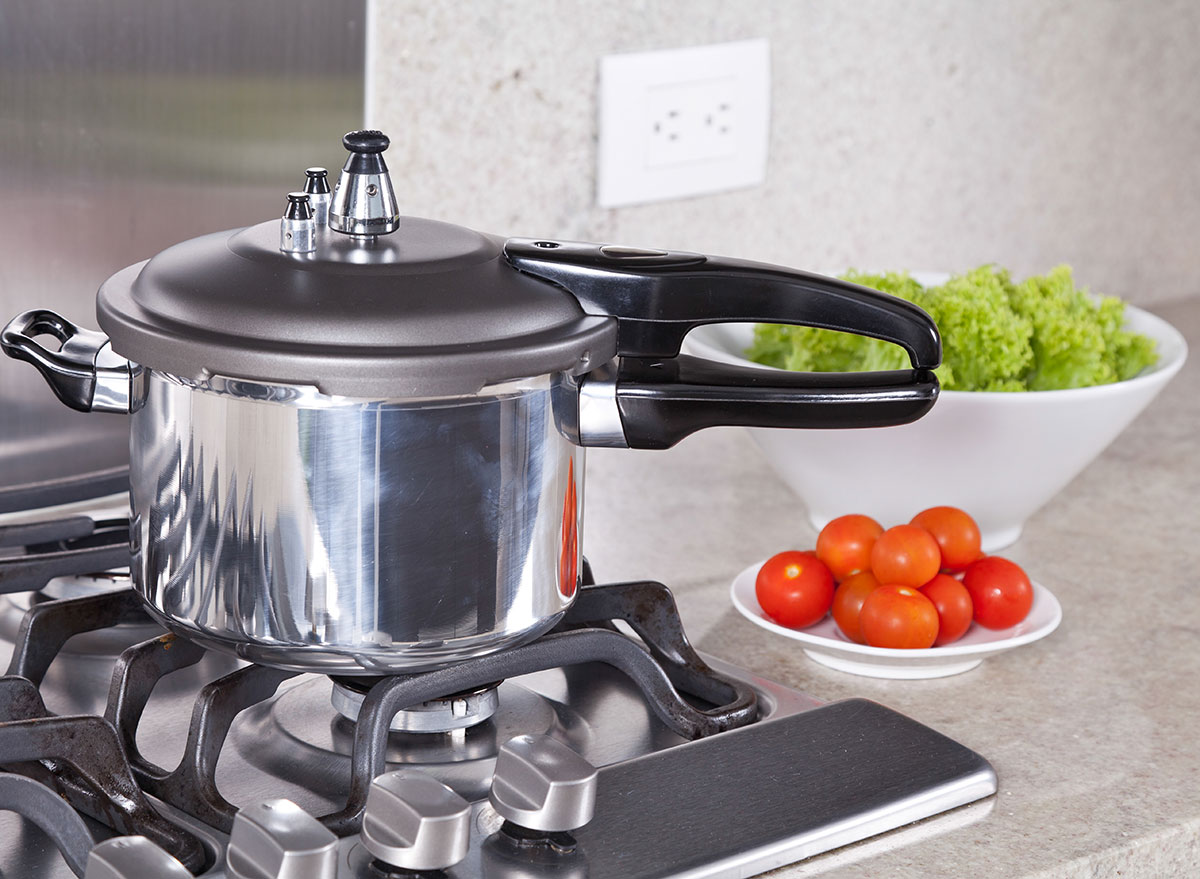
Your beloved pressure cooker—especially newer models like the Instant Pot—is built with many advanced safety features. But you should still follow your user manual to properly use the pressure cooker and prevent explosions or burns. The lid should be put on correctly and locked in position when cooking to prevent pressure from building up. Overfilling the cooker is also a risk.
Bleach

Bleach is a powerful cleaner and disinfectant, but never mix it with other cleaners, always ventilate your kitchen when cleaning with bleach, and avoid contact with skin and eyes to prevent chemical burns and irritation.
Garbage Disposal

Most people know not to place their hands in a garbage disposal when it is on or could be turned on. But if you drop something down the drain, try using tongs or another long device to fetch it, even if you know the disposal is off and will not be turned on.
Glass Dishes
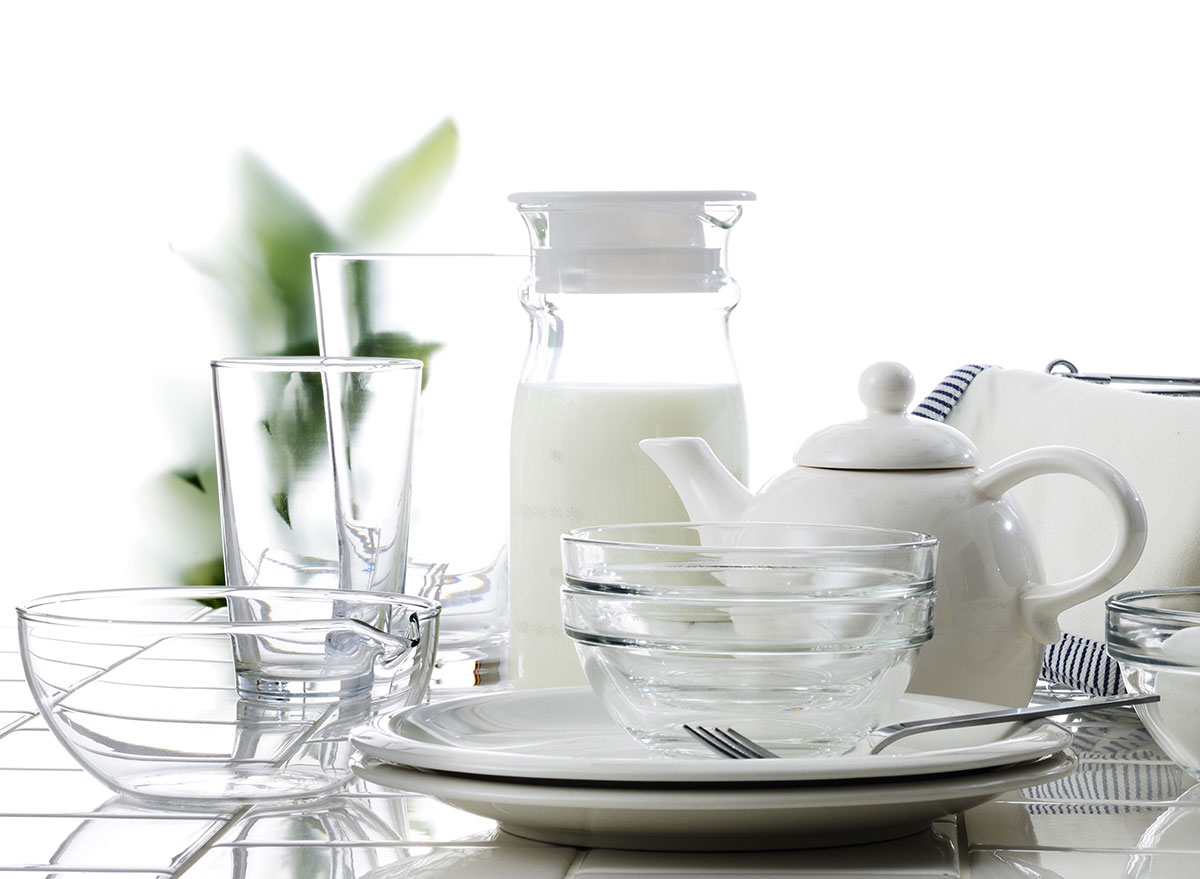
Thermal shock could turn a hot casserole dish in a glass baking pan into a sharp, steaming pile of inedible food and shards of glass. Always take caution not to put a cold glass dish into a hot oven, don’t pour hot beverages into cold glasses, and don’t rinse a hot pan with cold water. These changes in temperature can cause the glass to shatter.
REALTED: The Least Favorite Kitchen Chore
Sponges
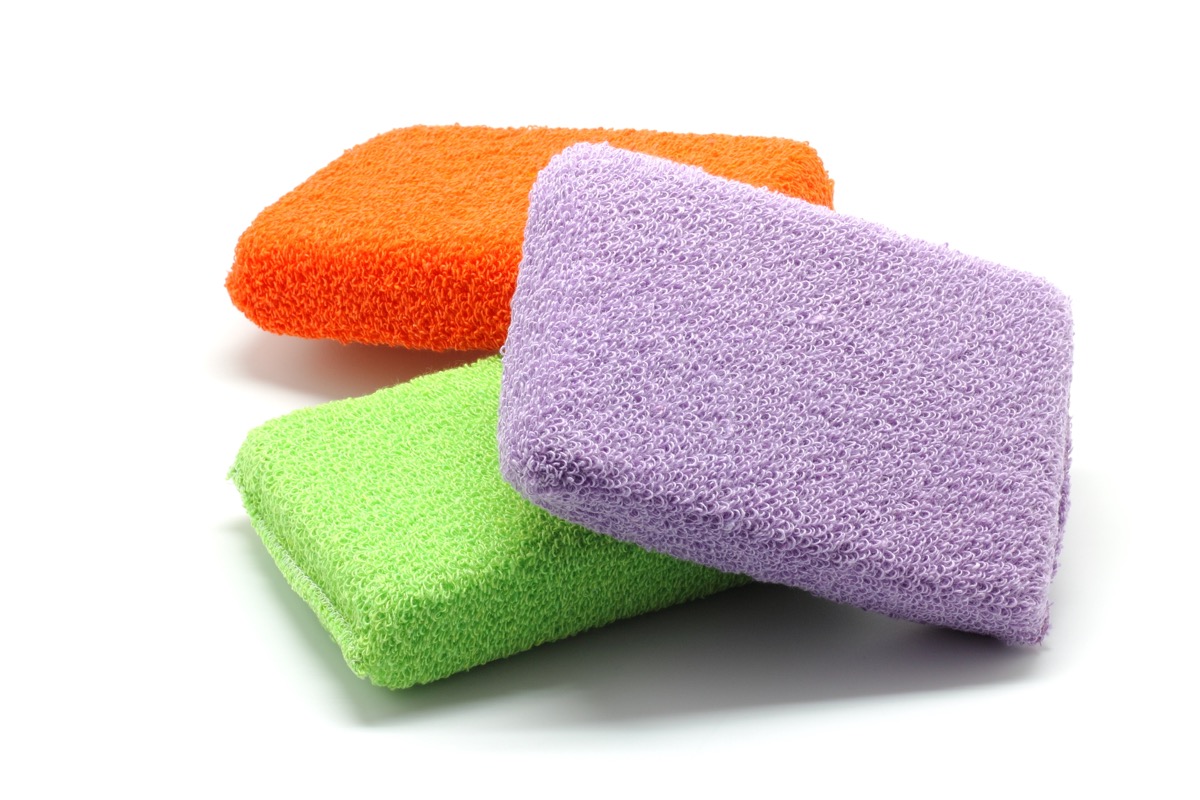
Sponges are another kitchen mainstay that can become a harbor for bacteria. One study in Nature found that sponges actually “represent the biggest reservoirs of active bacteria in the whole house”—even more than the toilet. The study also showed that even regularly sanitizing the same sponge only reduced bacteria by up to 60 percent. Gross, right? Instead, swap for a fresh sponge, or for an eco-friendly alternative to buying and throwing out sponges frequently, use cloths that you can wash and dry in the laundry after each use.
Range Hood
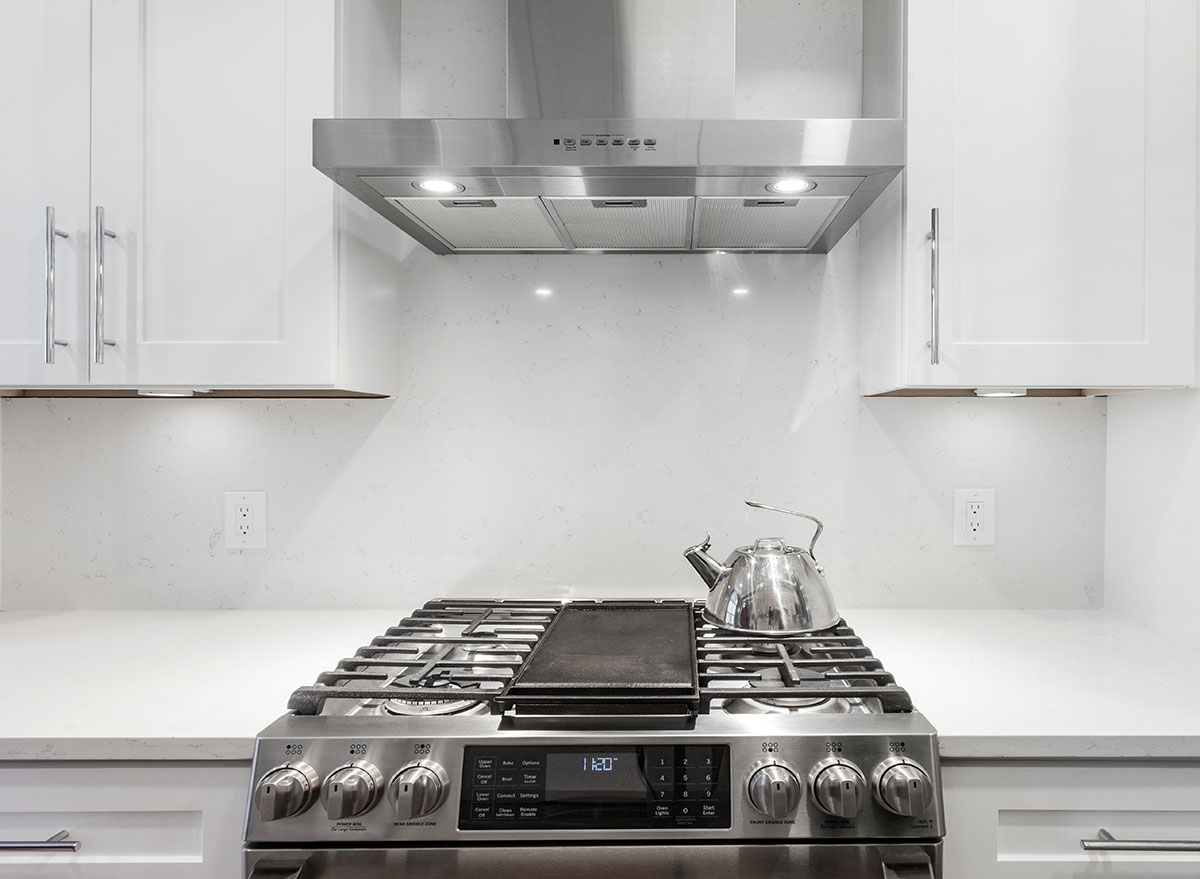
Range hoods tend to collect grease. If you don’t regularly remove the greasy build-up, it can ignite if it gets hot; it is likely to get hot just by its location right above a stovetop.
Vegetable Peeler
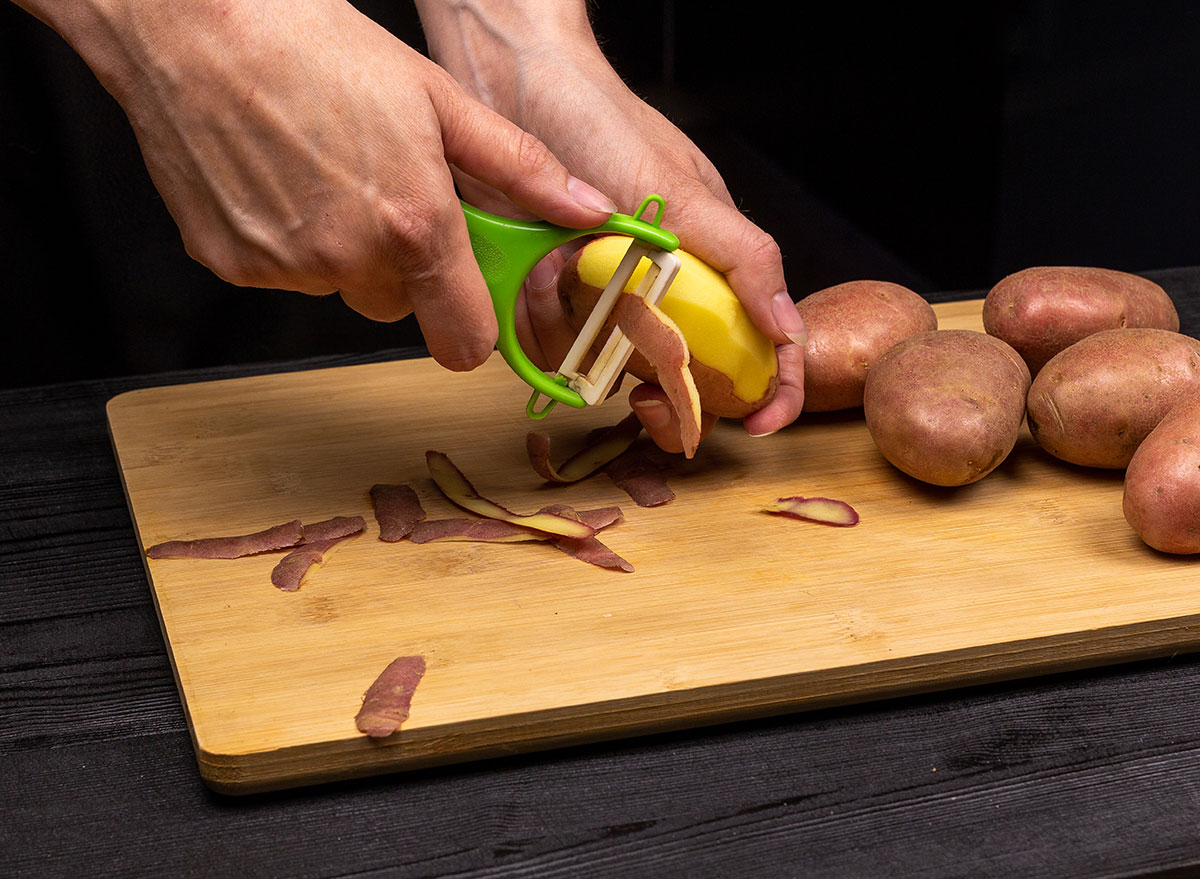
Peeling potatoes or carrots is quick with a vegetable peeler, but take care not to cut yourself by moving too fast. Also, be cautious when peeling curvy or irregular shaped vegetables, like squash, as the peeler can catch on the skin then jerk forward and cut you!
Oyster Shucking Knife
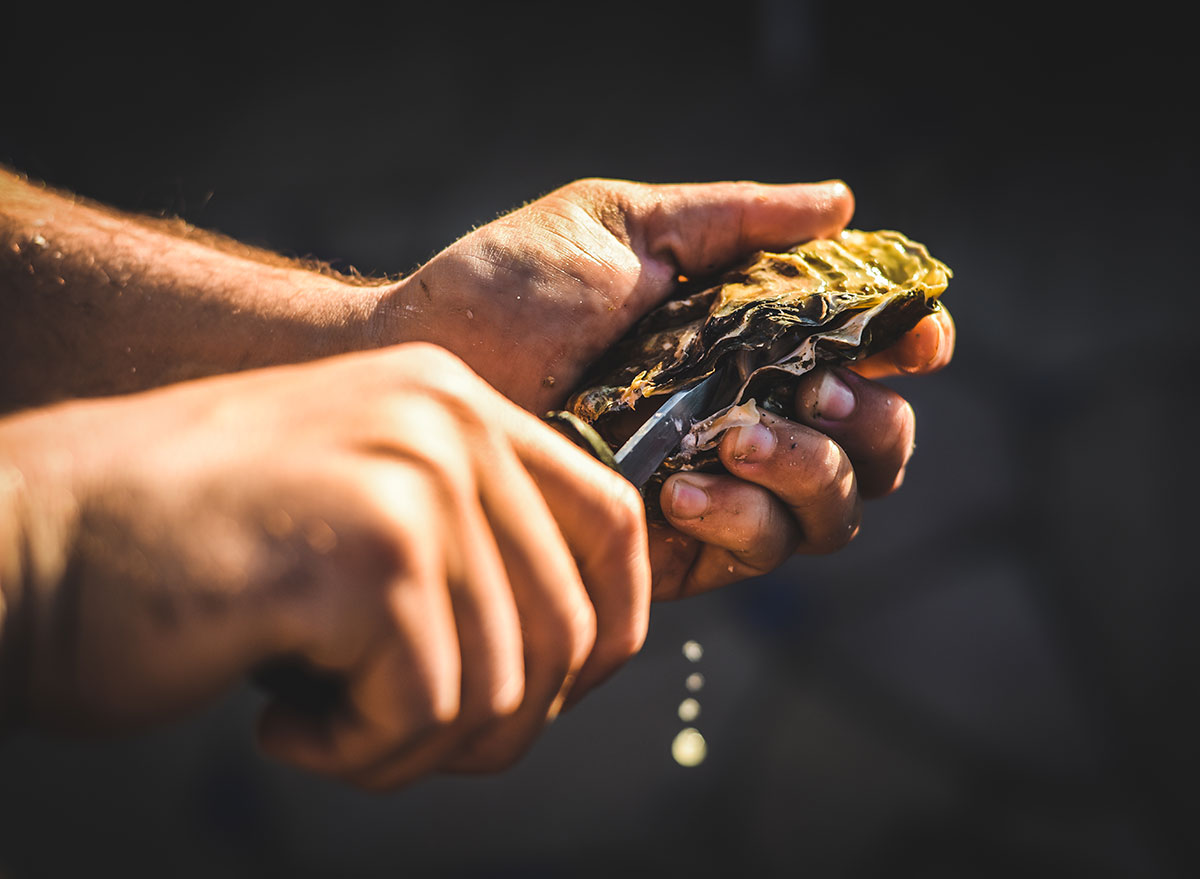
If you love to wine and dine at home, you likely have an oyster shucking knife in your kitchen. These knives are small and sturdy, specifically designed for opening up a pesky oyster shell. This is safer than using even a sharp kitchen knife, but you want to move slowly and carefully to avoid slipping and cutting your hand. It’s also a smart idea to wear a protective glove, one made specifically for shucking oysters, to prevent any mishaps.
Deep Fryers
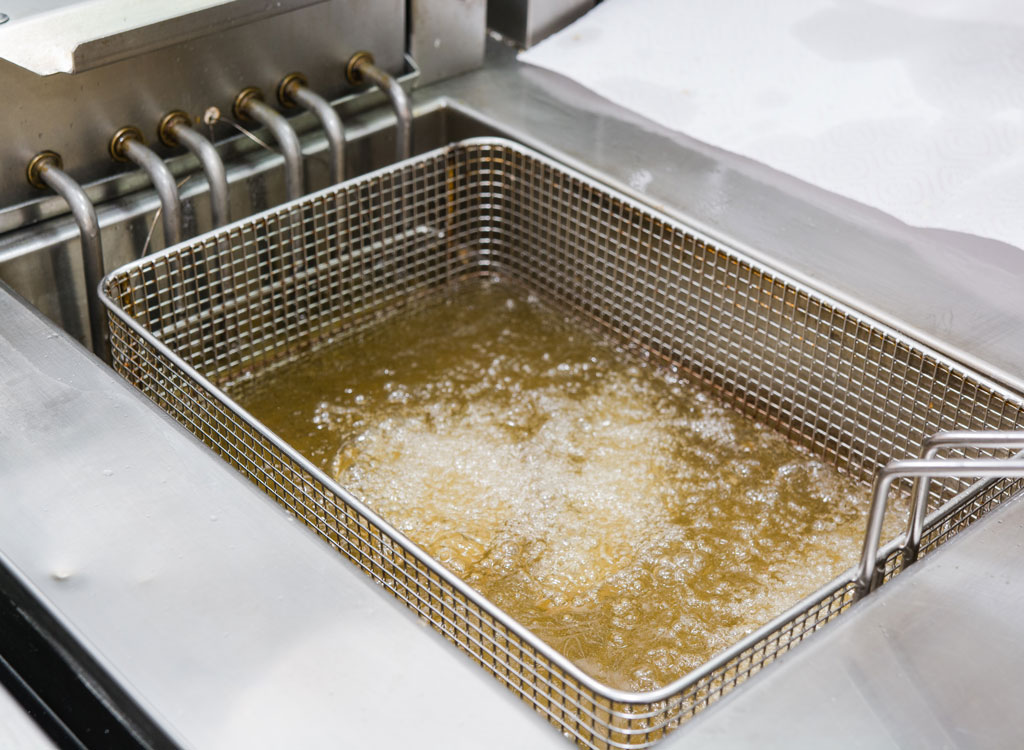
You might remember a recent Thanksgiving when many people were trying to deep-fry their turkeys. These stories were all over the news, because many times, the oil became hot enough to combust. But even countertop deep fryers can be dangerous.
The USDA says, “Deep frying in hot oil can be extremely dangerous. Hot oil can burn people and start fires. If food is not cooked to a safe temperature, it can cause a foodborne illness.” If you are deep-frying, keep the oil away from flames and keep water away from the oil to prevent fires and burns. Keep a fire hydrant handy in case of an emergency.
And to really stay on your A-game, check out these surprising kitchen safety dos & don’ts.
For more healthy eating news, make sure to sign up for our newsletter!
